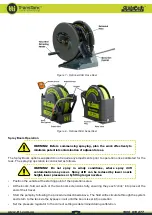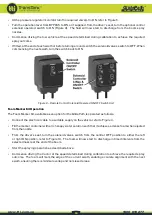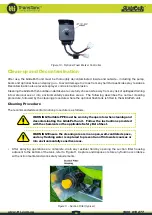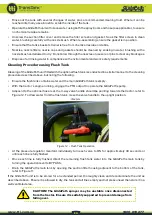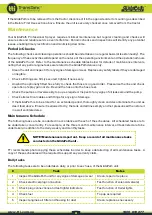
1800 816 277
www.tti.com.au
8
Product HandBook
GlidePath
™
Pump Engine Battery
With the optioned electric pump start upgrade, a separate, dedicated 12-volt battery is installed on the trailer
behind the pump unit.
Trailer
The trailer frame is an all steel, fully welded construction and hot dip galvanised for corrosion resistance. The
frame has additional welded gussets for added strength and filled-in chequer plate mudguards to protect the
tank. The single solid axle is fitted with 6-stud 15-inch Sunraysia wheels and available as unbraked or braked
(registerable) with hydraulic brakes.
The boom mount incorporates vertical slots, enabling the boom to be easily adjusted in height.
Tank
All TTi tanks are constructed from UV stabilised, chemical resistant, virgin material polyethylene. The tank is
fully drainable and has an internal basket strainer under the filling cap.
Tank Level Indicator
An optional level sight tube is fitted to the side of the tank and provides an accurate level indication of fluid
within the tank.
Flush Tank
The 20-litre flush tank is mounted in front of the GlidePath tank. A 3-way control valve draws water from the
flush tank through the lines and optional hose reel. The main tank can be then flushed with clean water by
removing the suction line from the sump.
Machine Limitations
The GlidePath units are subject to operating limitations. It is the operator’s responsibility to ensure that this
equipment is being operated safely and within these limitations.
Driving Stability
The GlidePath unit is heavy when filled with fluid. To maintain stability while operating this unit:
•
Ensure the trailer tyres are inflated to their correct pressure at all times. Underinflated tyres can
cause excessive lateral motion of the tyre, which may cause a rollover.
•
Allow extra room for braking and turning when the tank is full.
•
Ensure any side gradient (slope) is accounted for, especially when the GlidePath tank is full, as the
trailer may have a higher centre of gravity.
Spray Boom Calibration
Accurate calibration is an essential element of any spraying function as it ensures that the chemical is applied
at the rate specified on the product label. Application in excess of the recommended rate may be dangerous,
can damage crops and is uneconomical.
Calibration must be carried out:
•
When spraying for the first time with new spray equipment
•
At the beginning of each season
•
After changes of nozzle tips, spraying pressure or vehicle speed
•
After every 100 hectares of spraying

















